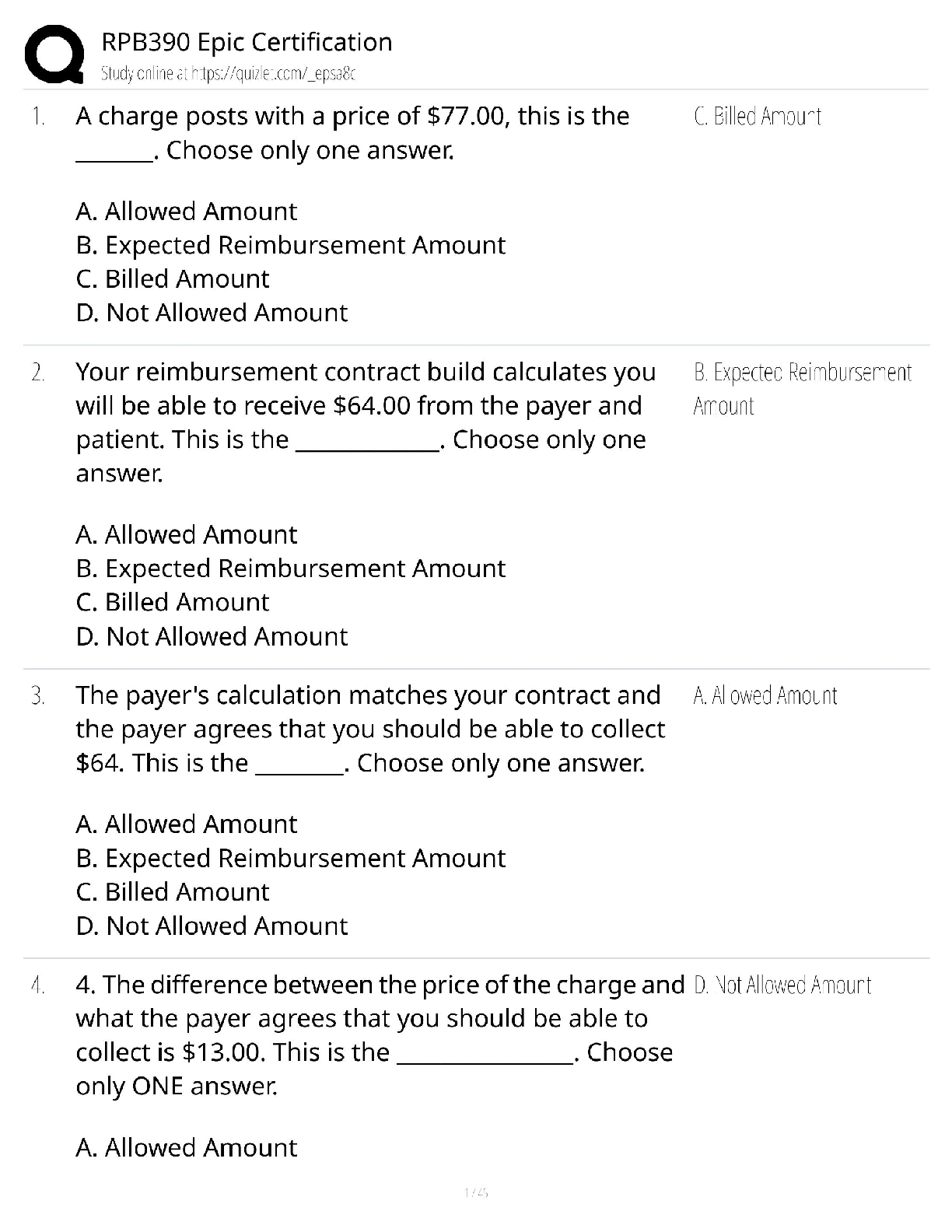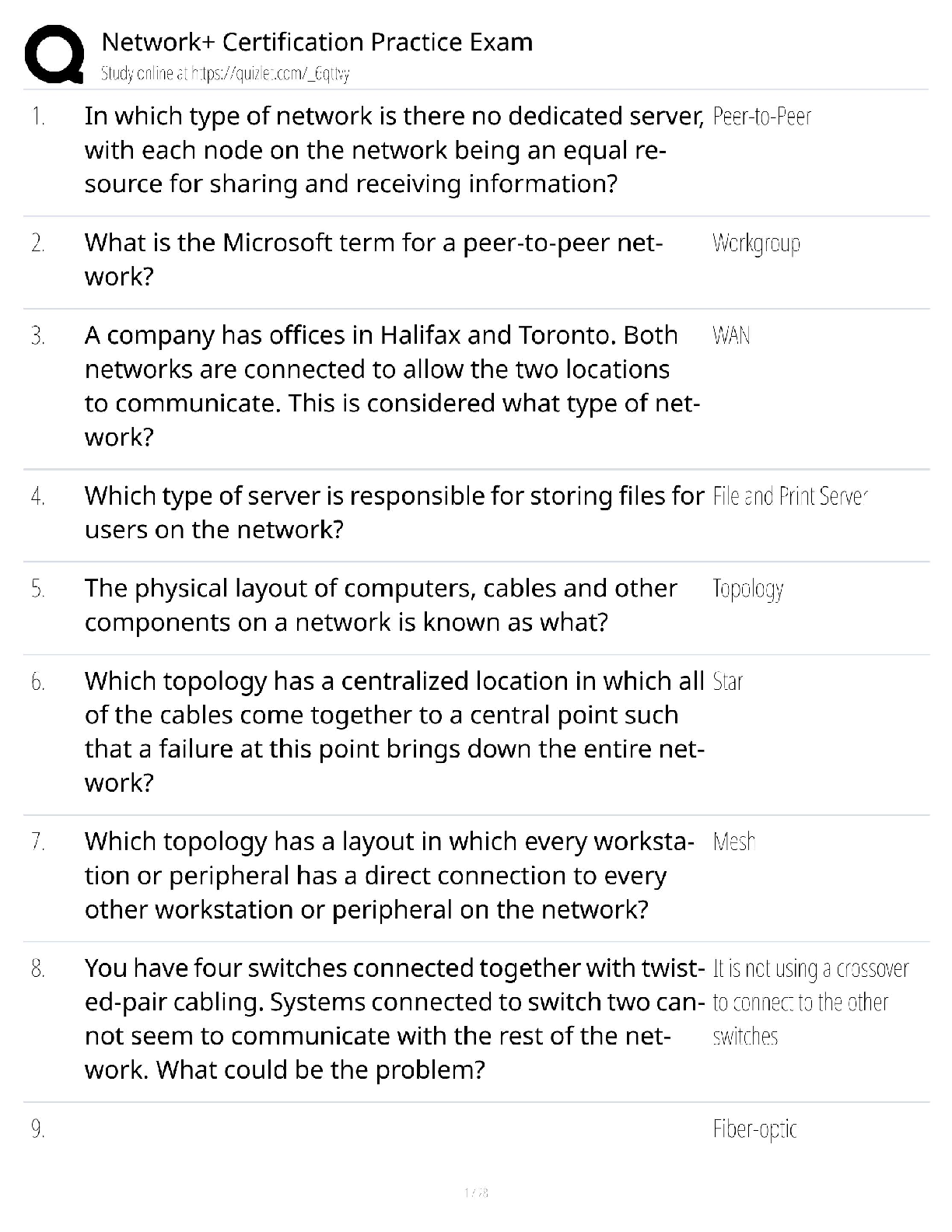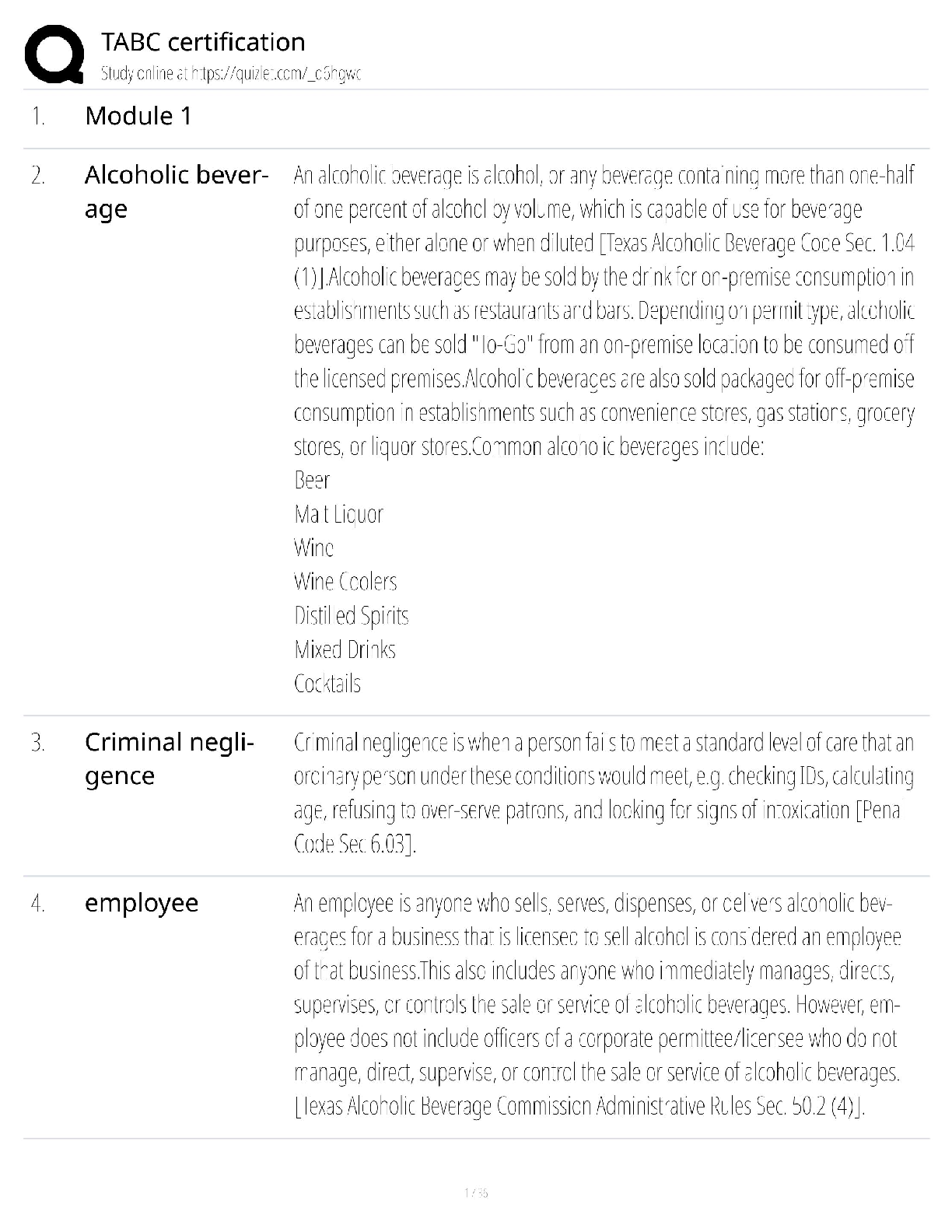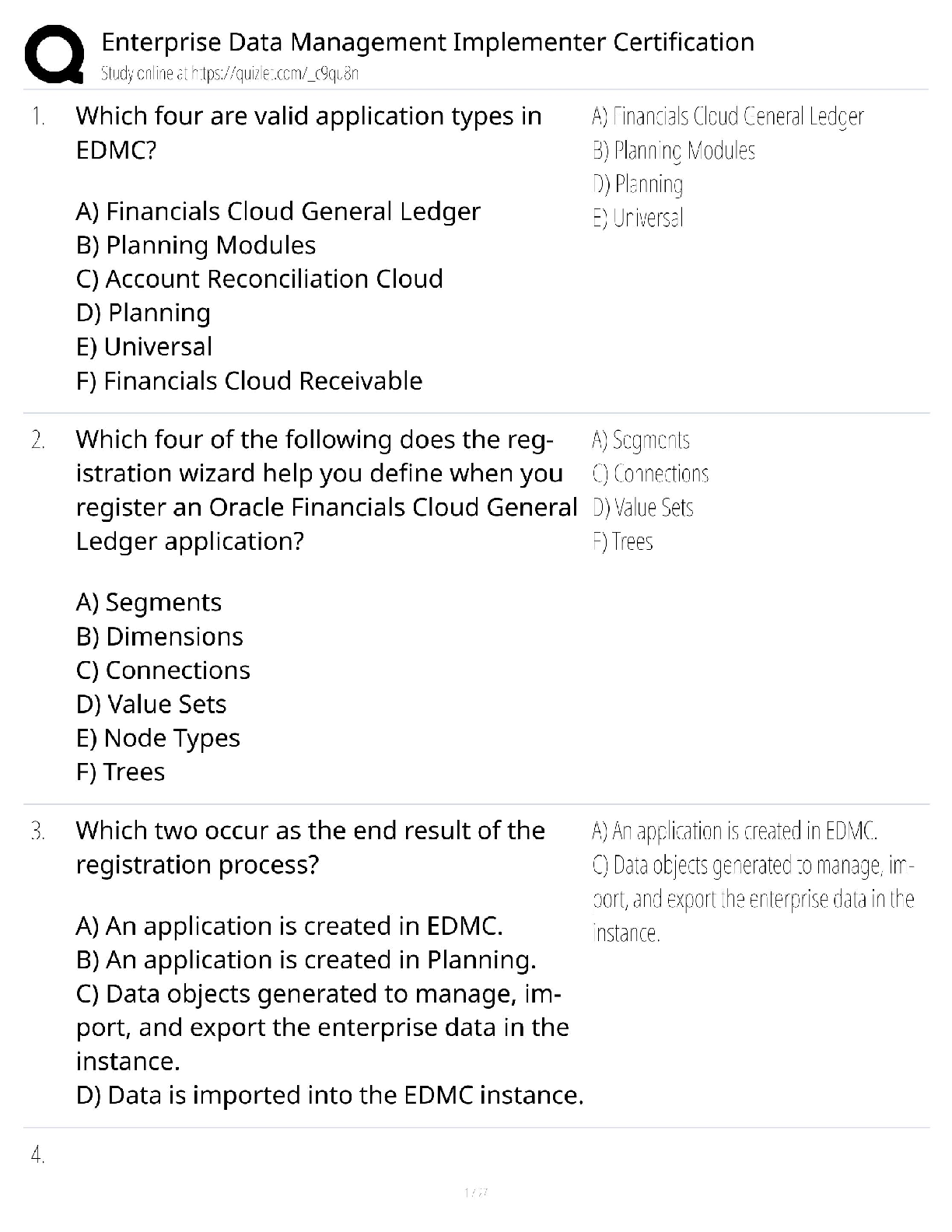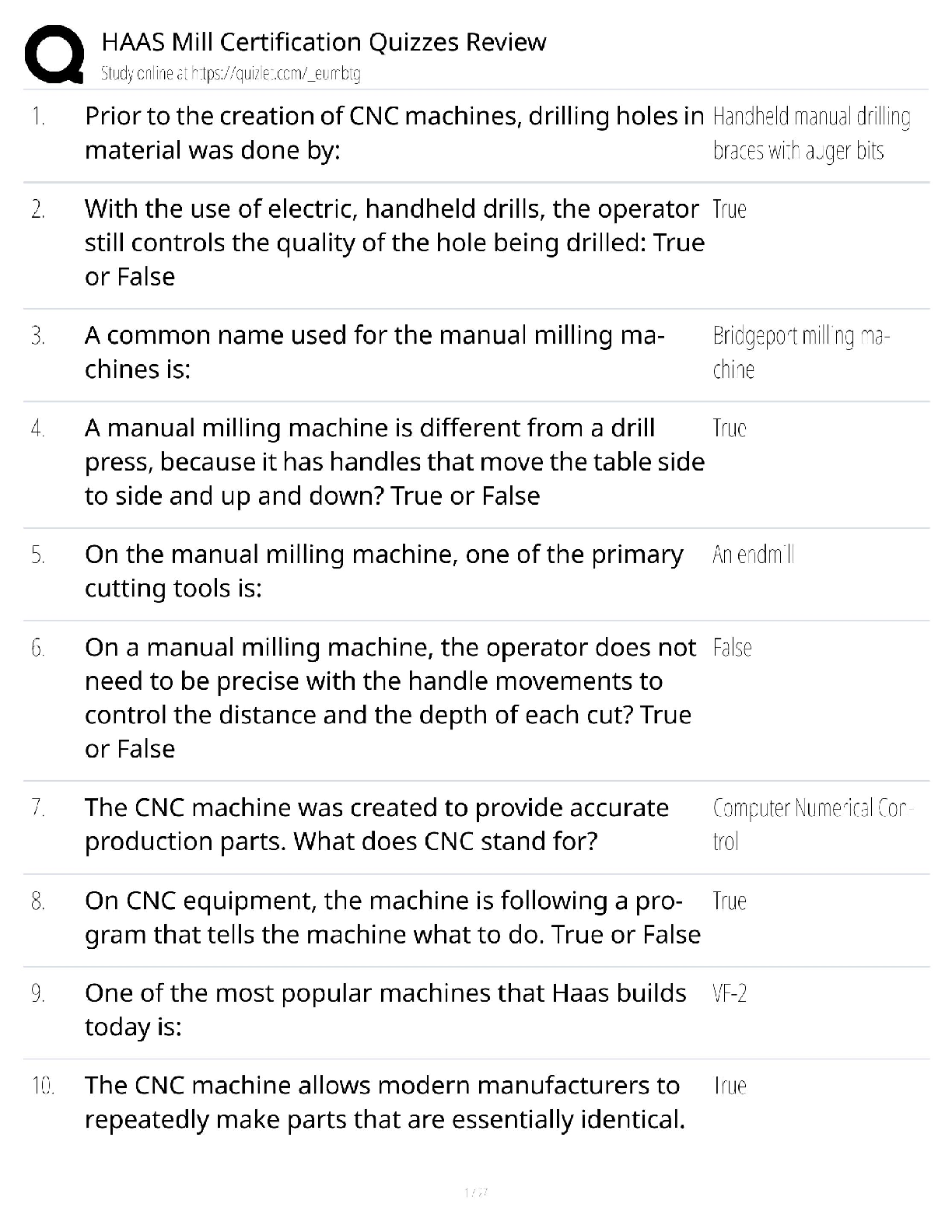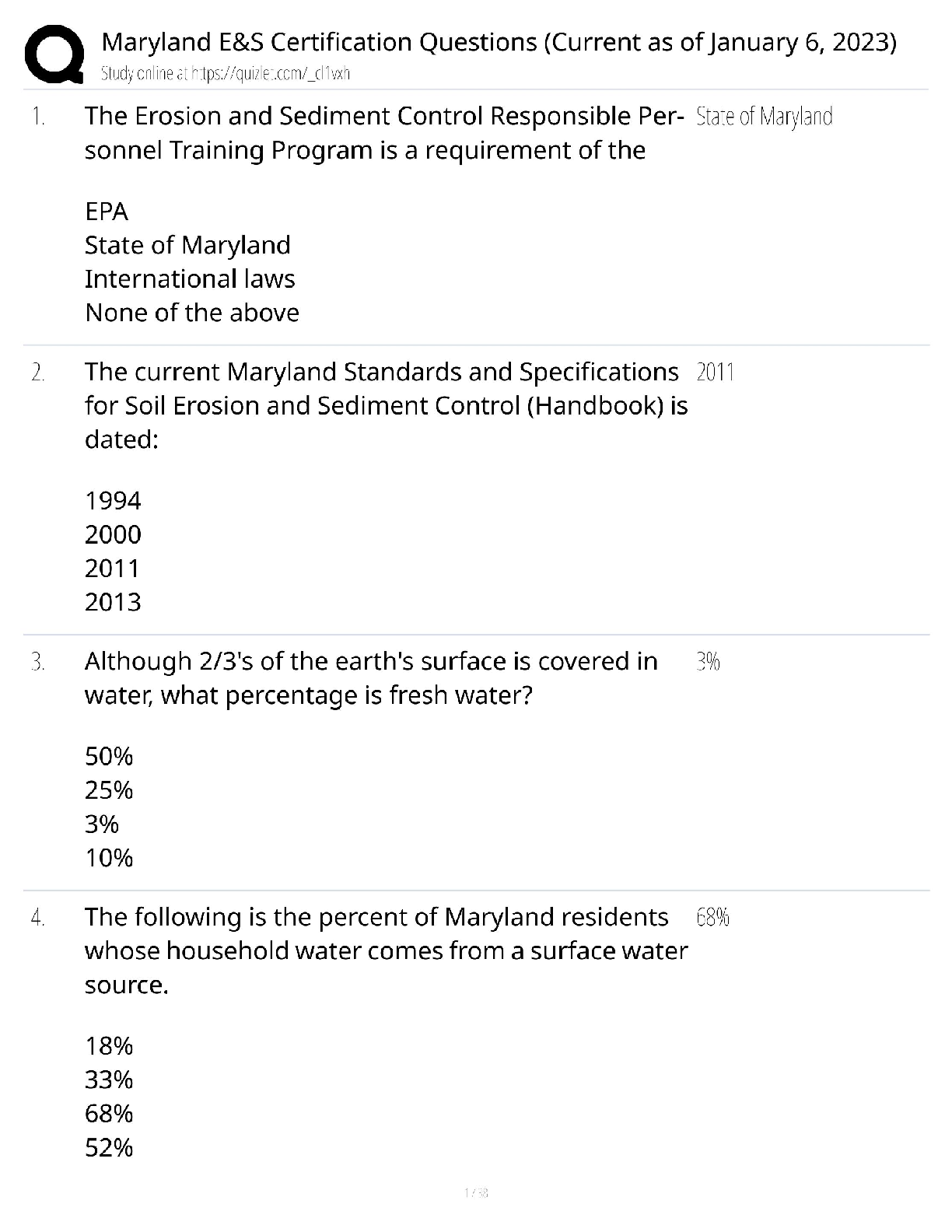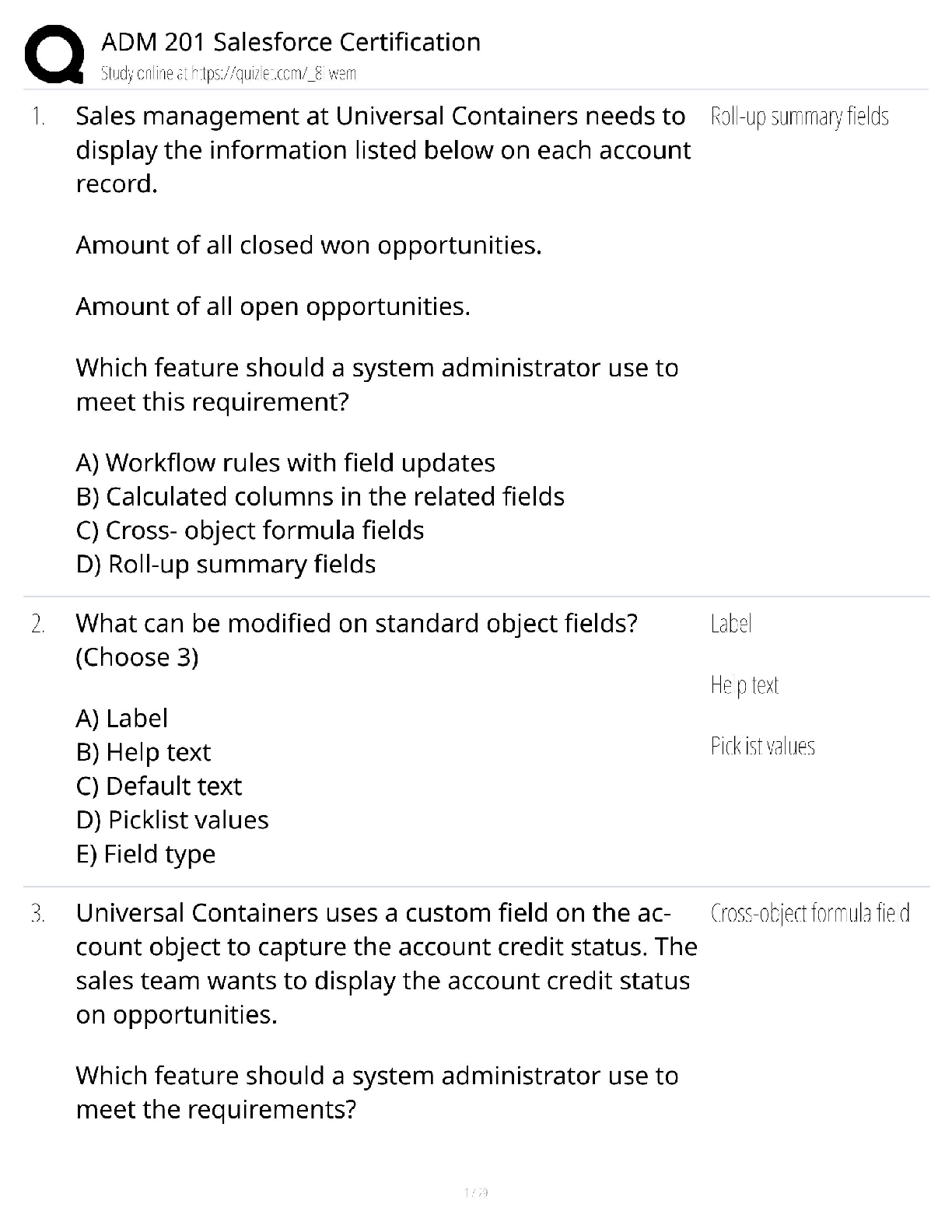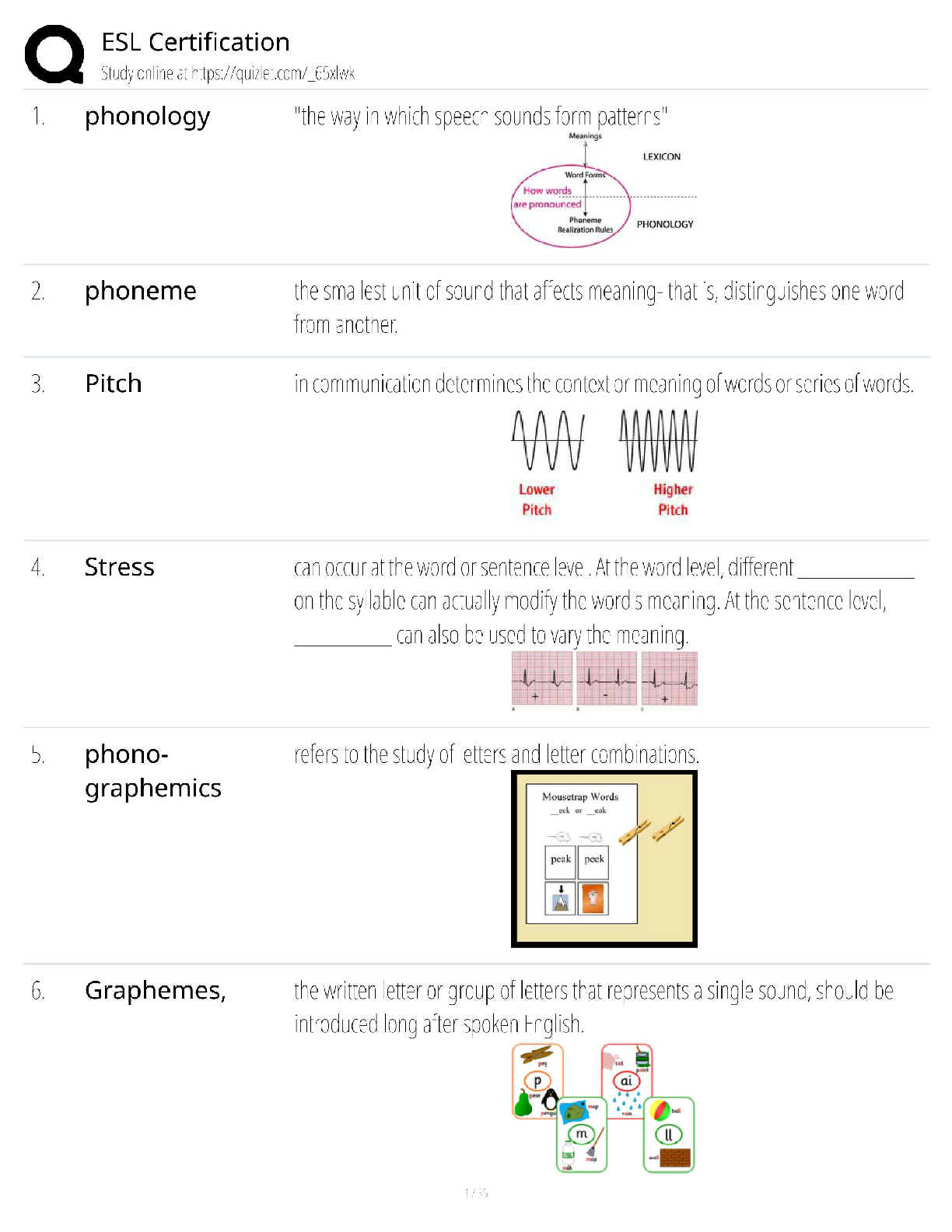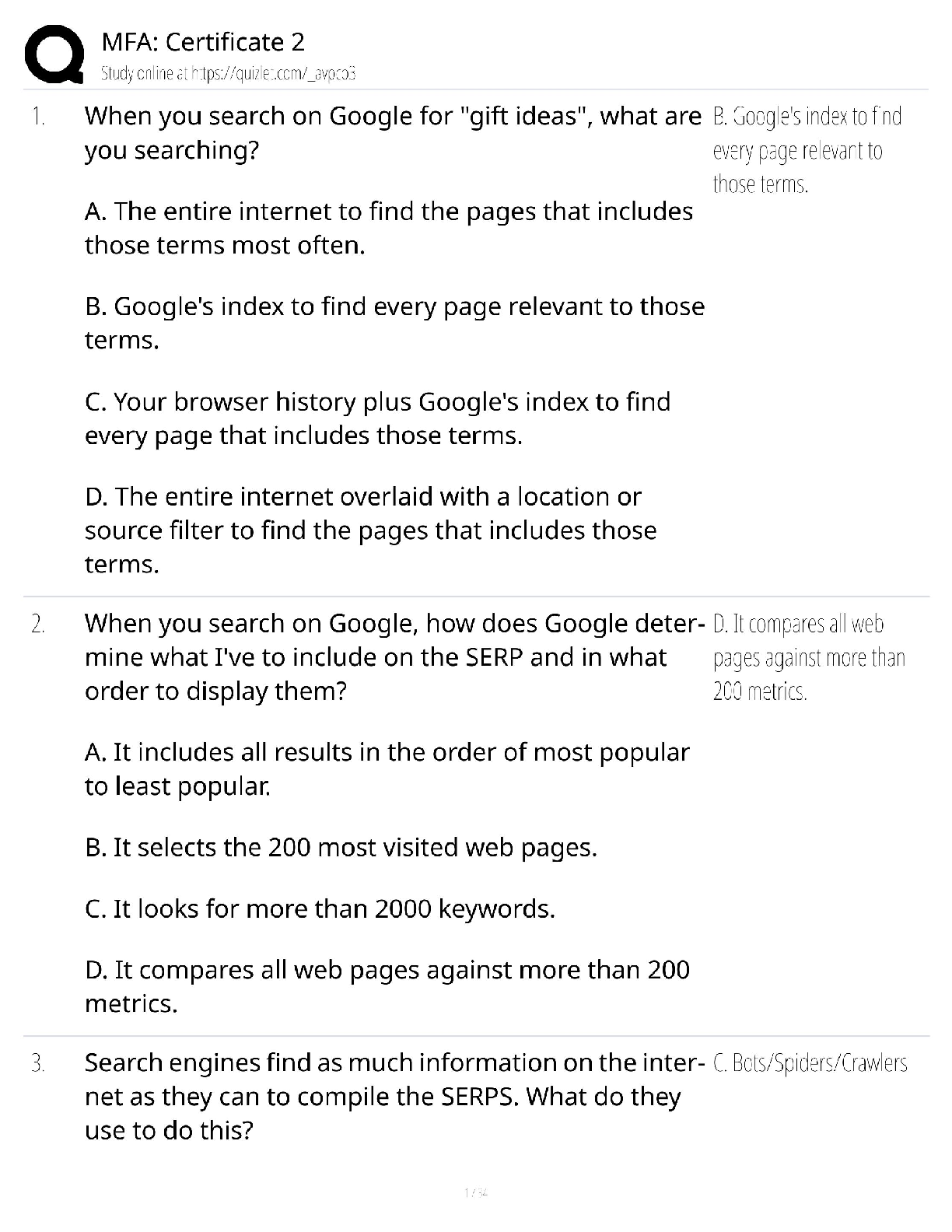Military Science > QUESTIONS & ANSWERS > Module 5 - Joint Intelligence Post Test. Revised and Corrected. 100% (All)
Module 5 - Joint Intelligence Post Test. Revised and Corrected. 100%
Document Content and Description Below
• Here is your test result. The dots represent the choices you have made. • The highlighted questions are the questions you have missed. • Remediation Accessed shows whether you accessed those ... links. 'N' represents links not visited and 'Y' represents visited links. 1) Automation technology can be used to reduce the burden of sorting through large amounts of to enable an analyst to correlate various sets of to make an assessment. [objective84] data, information intelligence, data information, intelligence data, intelligence 2) Joint intelligence planning supports joint operation planning and may result in the production of what three products? [objective102] National Intelligence Support Plan Dynamic Threat Assessment Annex B: Intelligence Contingency Plan 3) What two features distinguish intelligence from information? [objective86] Contributes to or shapes the commander's decision making process Consists of the synthesis of quantitative analysis and qualitative judgment with an assigned degree of confidence to the analytical conclusion Provides raw, factual information on a wide variety of subjects Allows anticipation or prediction of future situations and circumstances 4) Intelligence should increase the commander's understanding of the threat and adversary's probable intentions, end states, objectives, most likely and most dangerous COAs, strengths, and critical capabilities. This allows the J2 to . [objective87] approve the command Joint Manning Document direct Joint Reception, Staging, Onward movement and Integration (RSO&I) identify, define, and nominate objectives which are consistent with the threat and are relevant to the JFC's mission and intent define Commander's Critical Information Requirements (CCIR) 5) What is the primary role of the joint force J2? [objective88] To inform the commander To analyze data To collect and relate data from a wide spectrum into useable information To manage collection assets to maximize data collection across the operational environment 6) Collection activities acquire and extract data from the operational environment such that Processing and Exploitation can convert that data into information to be used during Analysis and Production to refine into to satisfy Requests for Information (RFI) or the commander's Priority Intelligence Requirements (PIR). [objective89] intelligence translation data fee information 7) The Commander's Critical Information Requirements represent both Friendly Force Information requirements and , which are derived from the intelligence organization and vetted across staff. [objective90] mission analysis identified requests for information threat assessments priority intelligence requirements (PIR) identified collection gaps 8) Which of the following must collection managers continuously monitor the results of? (Select all that apply.) [objective91] [Remediation Accessed :N] Effectiveness of meeting collection requirements to address the JFC's evaluation and feedback portion of the intelligence process Processing and exploitation and production capacity Diversity and availability of intelligence dissemination paths Available collection assets 9) Intelligence dissemination requirements and procedures must be coordinated through the . Communications directorate of the J6 Joint force command J3 Joint Collection Management Board Joint force command J2 10) Match each intelligence product category to its brief description. [objective93] [Remediation Accessed :N] a) Involves the integration of time-sensitive, all-source intelligence and information into concise, objective reporting on the current situation in a particular area. b) Examines foreign developments in basic and applied sciences and technologies with warfare potential, particularly enhancements to weapon systems; addresses overall weapon systems, tactics analysis, and equipment effectiveness. c) Results from the fusion of identity attributes (biologic, biographic, behavioral, and reputational information related to individuals) and other information and intelligence associated with those attributes collected across all intelligence disciplines. d) Information gathered and activities conducted to identify, deceive, exploit, disrupt, or protect against espionage, other intelligence activities, sabotage, or assassinations conducted for or on behalf of foreign powers, organizations, or persons, or their agents, or international terrorist organizations or activities. e) Forecasts of current or potential situations with implications for planning and executing military operations; includes a description of relevant actors' capabilities, and reporting of their activities, and it analyzes known factors using techniques such as pattern analysis, inference, and statistical probability to address unresolved variables. f) Portrays and locates the components of a target or target complex, networks, and support infrastructure, and indicates its vulnerability and relationship to the enemy Centers of Gravity (COG); consists of analysis of physical and virtual attributes and signatures as well as Battle Damage Assessment (BDA) resulting from the application of lethal or non-lethal military force. g) Provides a distinct communication to a decision maker about threats against U.S. security, interests, or citizens; carries a sense of urgency, implying the decision maker should take action to deter or mitigate the threat's impact. h) Focuses on the military capabilities of foreign countries and organizations to include non-state actors, and other topics that could affect potential US or multinational military operations. Counterintelligence Identity Intelligence Current Intelligence Estimative Intelligence Scientific and Technology Intelligence Target Intelligence General Military Intelligence Warning Intelligence 11) This intelligence product category forecasts current or potential situations with implications for planning and executing military operations. [objective94] Warning Intelligence Target Intelligence Current Intelligence Estimative Intelligence 12) What level of intelligence supports joint operations across the range of military operations in an area of responsibility and determines the current and future capabilities of adversaries that could affect the national security and U.S. or allied interests? [objective95] Force strategic Operational National strategic Theater strategic 13) An intelligence estimate of the enemy campaign lines of operation based on intelligence reporting of an extremist group's use of safe houses and the local population for logistical support is an example of what level of intelligence? [objective96] Theater strategic Human Tactical Operational 14) When considering the principle of synchronization, the most common error that impacts the J2, J3, and J5 is the failure to build sufficient lead time for intelligence production. [objective97] False True 15) Which one of the following intelligence principles is described as the process of collecting and examining information from all available sources and intelligence disciplines to derive as complete an assessment as possible? [objective98] Synchronization Fusion Unity of effort Collaboration 16) The JTF J2 should have personnel knowledgeable in foreign disclosure policy and procedures and should obtain necessary foreign disclosure authorization from DIA as soon as possible. [objective99] True False 17) Which of the following intelligence communities is responsible for providing timely, relevant, and accurate geospatial intelligence (GEOINT) support to imagery intelligence (IMINT), geospatial information, national imagery collection management, commercial imagery, imagery-derived MASINT, and some meteorological and oceanographic data? [objective100] National Reconnaissance Office (NRO) National Security Agency (NSA) National Geospatial-Intelligence Agency (NGA) Defense Intelligence Agency (DIA) 18) The intelligence component of the National Joint Operations and Intelligence Center (NJOIC) provides planning, management, and infrastructure for intelligence working groups and intelligence task forces that provide direct intelligence support during major conflicts. [objective101] False True 19) Technology is often applied against what common analyst challenge? [objective85] CCIR management Information overload Subjective assessments Replacing cross staff collaboration [Show More]
Last updated: 3 years ago
Preview 1 out of 5 pages

Buy this document to get the full access instantly
Instant Download Access after purchase
Buy NowInstant download
We Accept:

Reviews( 0 )
$5.00
Can't find what you want? Try our AI powered Search
Document information
Connected school, study & course
About the document
Uploaded On
Feb 13, 2020
Number of pages
5
Written in
All
Additional information
This document has been written for:
Uploaded
Feb 13, 2020
Downloads
0
Views
264


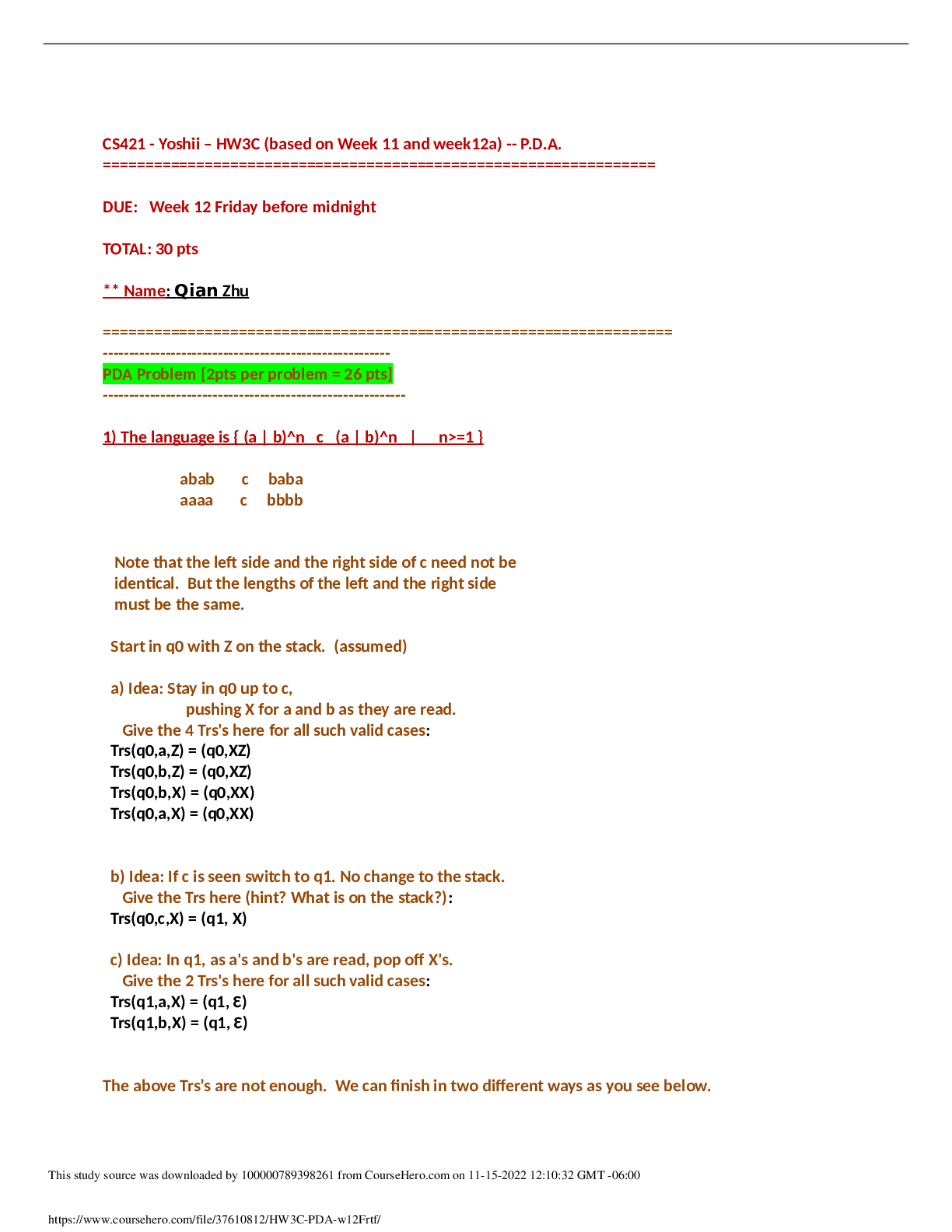


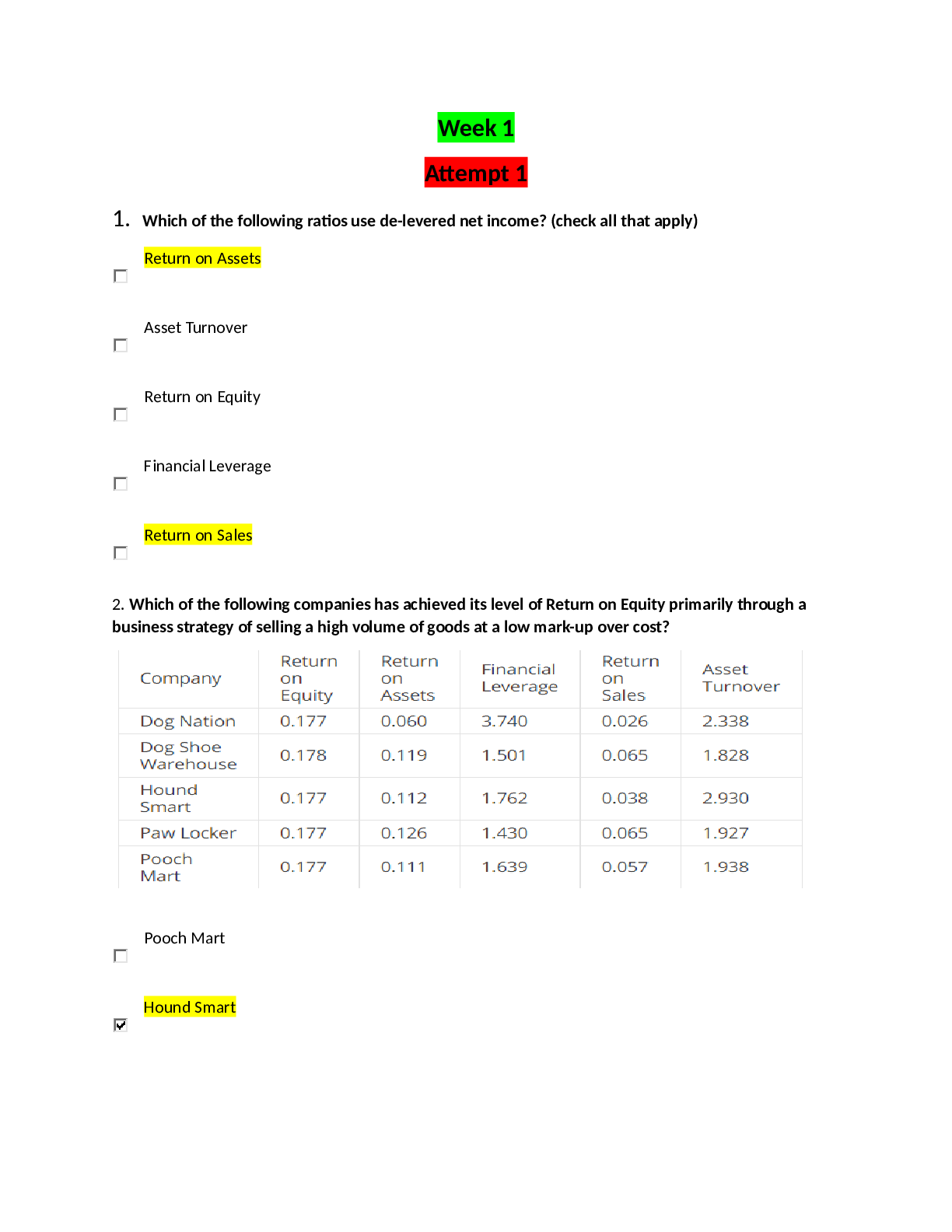
.png)
.png)
.png)
.png)
.png)
.png)
.png)

